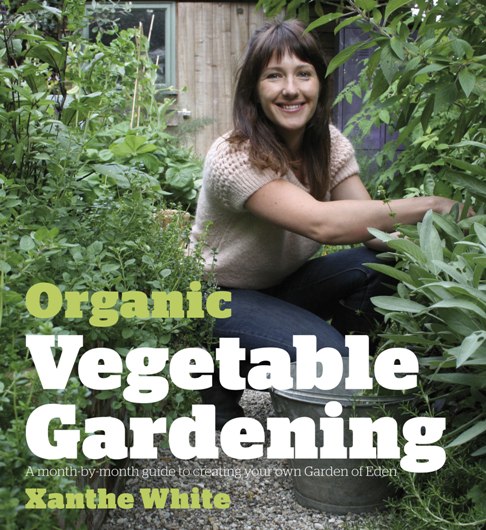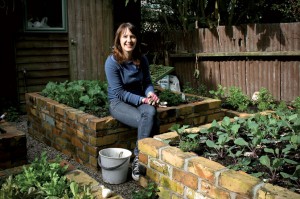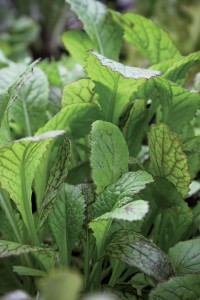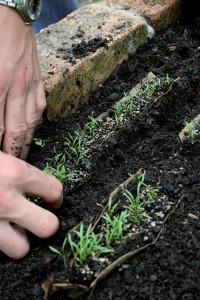Book Release – Organic Vegetable Gardening Xanthe White
Of all the how-to gardening tips friends and clients could ask of New Zealand’s landscape-design star, Xanthe White says people mostly quiz her about growing veges.

A month by month guide to growing your own Garden of Eden
Of all the how-to gardening tips friends and clients could ask of New Zealand’s landscape-design star, Xanthe White says people mostly quiz her about growing veges.
It’s clear that vegetable gardening is big again, for both money-saving, eco and health reasons, but many people don’t know how to get growing in the first place.
So, here’s a book that takes readers by the hand and shows them how to transform their backyard bombsites to organic Gardens of Eden in just one year.
It seems impossible but it’s not because Xanthe White’ has just done exactly that herself.

Xanthe White’s new book, out 18 September, documents a year in a garden she built from scratch in a neglected inner-city backyard, and it will inspire readers to realise that they can do it too.
Book Exerpt
OCTOBER
Labour Day is on its way. Not only is it the number one weekend on the gardening calendar; it’s also the first long holiday weekend after a long winter. This makes it the perfect time to get into the garden if you haven’t already. But before Labour Day there are sure to be beautiful spring days in which you can sow seeds and chip away at garden tasks, as well as harvesting your winter crops to make room for the new season’s planting.
With half the garden year behind me I’ve found the value of a vegetable garden has come up in many conversations. The normal calculation is what you spend at the garden centre plus your time versus what you spend at the greengrocer. That’s a wild oversimplification! Value can be perceived in many ways.
When running a household you need to assess the basic economics. You should also do this with your garden, selecting a range of crops but also ensuring you have plenty of the key providers or high-yield-for-labour varieties. With many of the crops I planted at the beginning of this project now maturing, it’s good to assess which would fall into this last category. The broad beans are delicious, and although they never caught up with my dad’s, the crop is still worth the effort. It’s definitely a value-filled crop, even when slightly underperforming. The pak choi, too, has been really
successful. These Asian greens are high value over the winter months, when production in the garden moves along slowly, and I am looking forward to growing many of these from seed next autumn for the following winter’s harvest.
Staples such as salad greens, silverbeet, spinach and parsley all should be permanent parts of the garden. Vietnamese mint is a new discovery; its hot minty flavour is an exciting new addition to my cooking. Its growth is certainly vigorous but unlike common garden mint it does not send suckers out, making it more manageable. It also offers a pleasurable aesthetic to the garden.

While these plants are of high value, your overall experience of the garden will be greatest if you also include lower- or slower yielding crops, such as broccoli and cauliflower, that offer both variety and highlights through the year’s gardening.
My beetroot are so far looking a bit disappointing but they need a decent growing season and I suspect I am being impatient. In the meantime I can at least steal a few leaves for salad greens. A good dose of liquid fish fertiliser should help them along as well.
I think my impatience is just a symptom of the world I have grown up in, where everything is focused on instant gratification.
I began to cure myself of this disorder when I visited Japan. Sitting in the most beautiful gardens that had been conceived centuries before and had been nurtured by monks through changing dynasties and world wars, I gained a broader perspective on what makes a great garden. The crucial factors are the continued nurturing of and engagement with the space and the plants that fill it. This is why many of the most wonderful gardens in New Zealand, such as Ayrlies in Auckland or the Jurys’ garden in New Plymouth, are those that have been the work of a lifetime, or indeed of generations.
When we use terms such as ‘organic’ and ‘nature’ we have to consider where a garden fits. A garden should be considered nature in its purest sense. We are not separate from our gardens; we are part of their natural state as caretakers, conservationists and industrious developers. The value of growing a garden as a complete system, with waste composted and returned to the beds, cannot be measured just in economic terms. To actively garden, be it for interest in the provenance of our food or for pleasure, is the first step towards a deeper understanding of the natural world. The second is to accept that we are part of a greater, more complex system that we should interfere with only with great caution. Commercial sprays
and plant hybrids that offer solutions to symptoms, not causes, should be viewed warily. Gardeners are the first to see that our natural world is changing, be it the smallest-seeming things such as the absence of our friend the honey bee.
With one small child and the pending arrival of another, I find the value of a garden as a place of learning for me and my children is also quite measurable. When we began the garden, my son watched the activities from his backpack. Now he confidently waddles around the raised beds, imitating my actions with determined concentration. It’s delightful, and more affordable than daycare or toy stores. And he’s not the only one learning! I’d tried growing celeriac and was slightly disappointed, finding it a bit stringy and inferior to both parsley and celery. A week or so later, while I was catching up on my reading, I came across a reference to celeriac.
My cheeks blushed warmly: it was not the stem but the root that should be harvested! I had assumed that, because of its name it would be eaten in a similar manner to celery. My garden notes now read: ‘Celeriac — plant every year to remind you that you don’t know everything.’
This also made me think about how important it is to know the many uses of plants so you can get true value out of your garden.
Broad beans, for instance, should be tipped while they are growing. The tips are delicious and easily provide the greens for the family for a meal or two. Many crops can be harvested more than once.
Broccoli is an example: it can be harvested for more than the main head. The central stem should not be left to get huge but harvested when it is young and sweet, cut from the stem with the plant remaining in the ground. The side shoots that follow have as much value as your first crop. Brussels sprouts can be treated similarly.
After the winter crop is complete, leave the plants in the garden and in spring they will send out tasty side shoots. Such knowledge can make tiny areas more productive. It also makes your harvests more varied and interesting.
This chapter continues with seed sowing and planting guides shedules, pest & disease control and tasks.
Buy Organic Vegetable Gardening now from Fishpond.co.nz



Have you a recipe for an organic spray for roses after pruning please?
Hi Jackie,
An organic copper spray is good to clear up and overwintering spores. You local garden center should have copper powder – follow instructions.
Regards
Tim